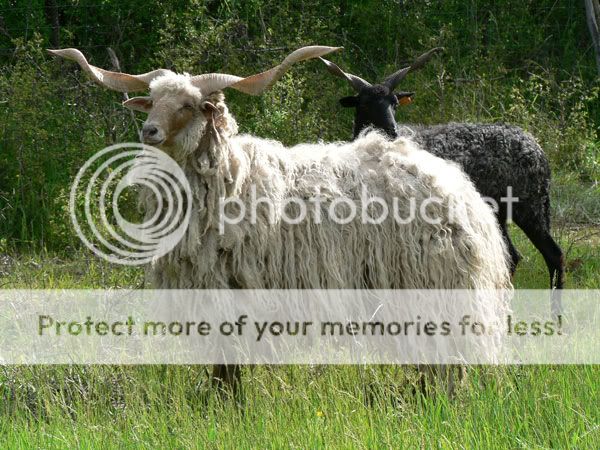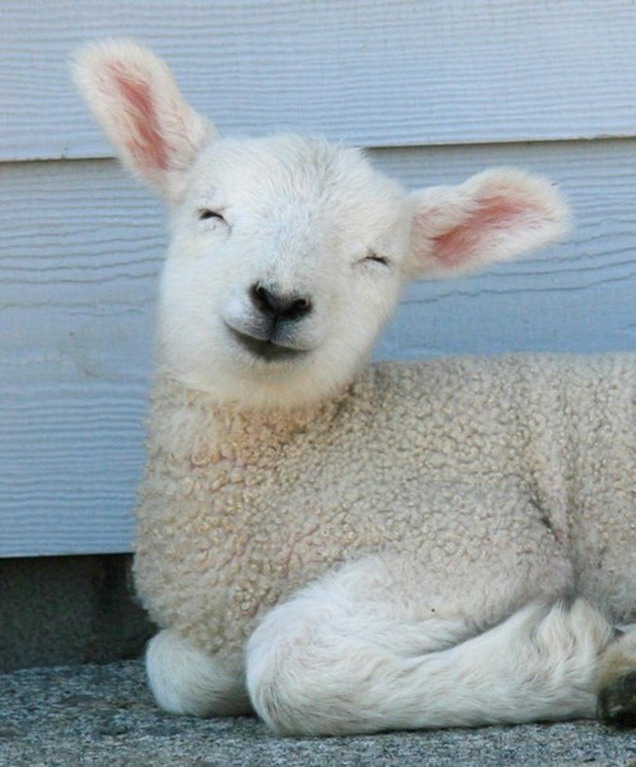According to the Chinese calendar 2015 will be the year of the
Sheep. I sometimes draw the sheep on the Welsh hills that surround our
village. Mostly they are ordinary sheep like these with black
faces

Soon they will start lambing, surely a symbol of new year.

After the Romans introduced sheep to our island Britain and Spain became world centres of the wool trade. This trade made the West Country and East Anglia very rich, the heritage is still with us; many of our our most beautiful churches were built from money earned from the wool trade. We call them Wool Churches

The Church of the Holy Trinity, Long Melford,
Suffolk 1467 and 1497 in the late Perpendicular
Gothic style
The other living heritage are the huge varieties of sheep in
Britain, more than any other country in the world.
When I walk on the hills round our house I come across many
different varieties of sheep, this one was very round with a black nose and
dense wool

a local farm has a breed that looks a bit goat like, this one had lost half its fleece and looked very comic. Ancient breeds tend shed their fleeces naturally.

Some sheep are very beautiful. These are not British, they are Swiss Black Nose Valais.
Black Nose Valais from Switzerland
This is an Austrian/Hungarian sheep ....... well pig actually,
but he is rather fun and it is good to be all inclusive at New
Year.

Mangalitzas and are native to Austria and Hungary - Essex
Zoo
These are Teeswaters

Teeswaters
These have fine ears, I think they are Border
Leicester

Border Leicester
These Racka Sheep with their fine horns are from
Hungary.

Hungarian Racka sheep
and Yorkshire Swaledales have fine horns too

Yorkshire Swaledale
This pretty flock are Scottish Black Face

Scottish Black Face
Sheep were domesticated about 11,000 years ago, it is believed from the wild Asiatic Mouflon that at that time roamed between the Balkans, Northern Iraq and the Russian Steppe and Urals. Mouflon still exist in the Caucus mountains

Mouflon Ram
Rams are not weak animals, they are aggressive fighters that put their heads down and ram their opponents. A ram will beat a goat in a fight, some ancient helmets were decorated with rams horns.

A Greek helmet decorated with rams
(Helmet. Greek, South Italian. 525-500 BC. | Saint Louis Art
Museum)
but the flocks of domesticated sheep are placid animals that have lost their ability to fend for themselves, they need our constant protection.

Illustration from the Aberdeen Bestiary: The wolf eyes up
some sheep whilst the shepherd sleeps (12th century)
It is inevitable that an ancient animal that provided us with milk, meat and wool would be adopted by many religions. Early civilisation's such as the Sumerians sacrificed sheep for divination and had a god that was a lord of shepherds. Religions that followed later continued these traditions; Islam, Judaism and Christianity all share a common memory of Abraham's sacrifice of a ram in place of his son, Isaac. Later in the Judaic and Christian traditions the sacrificing lambs became a symbol of atonement, they believed the shedding of the blood of an innocent lamb would cleanse us of our sins. This symbolism is carried through with the image of Jesus as being both a shepherd who looks after his flock and as Agnus Dei "the lamb of God" who shed his innocent blood to atone for the sins of all mankind.

Jan van Eyck painting "Ghent Altarpiece", finished 1432.
Detail: adoration of the lamb

With this image of harmony in mind we cannot for the world think of a better image with which to greet our friends and customers, be they Islamic, Taoist, Christian, Jewish or Shinto, Buddhist or believers in an eternity of nothingness, be they in America, Africa and Russia, Hungary, Dagestan, Japan, New Zealand and Australia, Switzerland, France, Germany and Norway. To you all with this image of a lamb we wish you all a very Happy New Year.

Detail: adoration of the lamb
I always like the Christmas image from Isaiah 11:3 where it says "The wolf
will live with the lamb, the leopard will lie down with the goat, the calf and
the lion and the yearling together; and a little child will lead
them.”

With this image of harmony in mind we cannot for the world think of a better image with which to greet our friends and customers, be they Islamic, Taoist, Christian, Jewish or Shinto, Buddhist or believers in an eternity of nothingness, be they in America, Africa and Russia, Hungary, Dagestan, Japan, New Zealand and Australia, Switzerland, France, Germany and Norway. To you all with this image of a lamb we wish you all a very Happy New Year.

Happy New Year


































